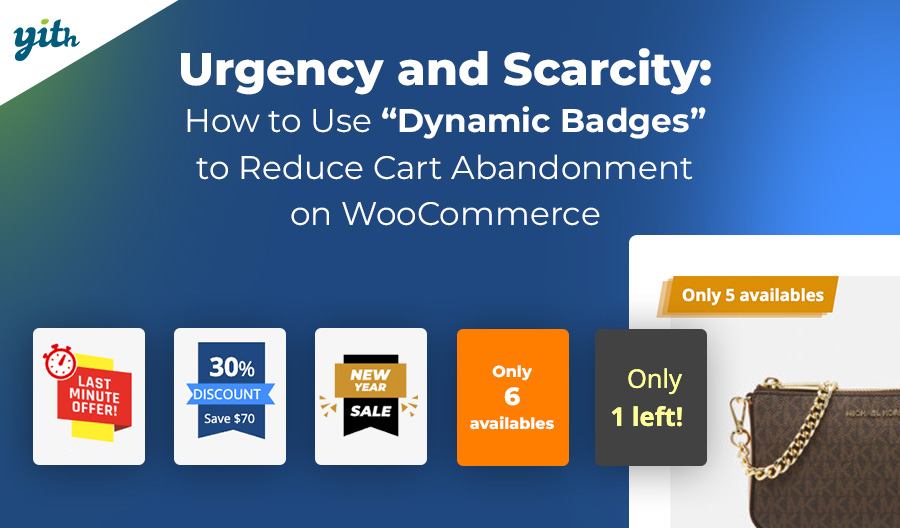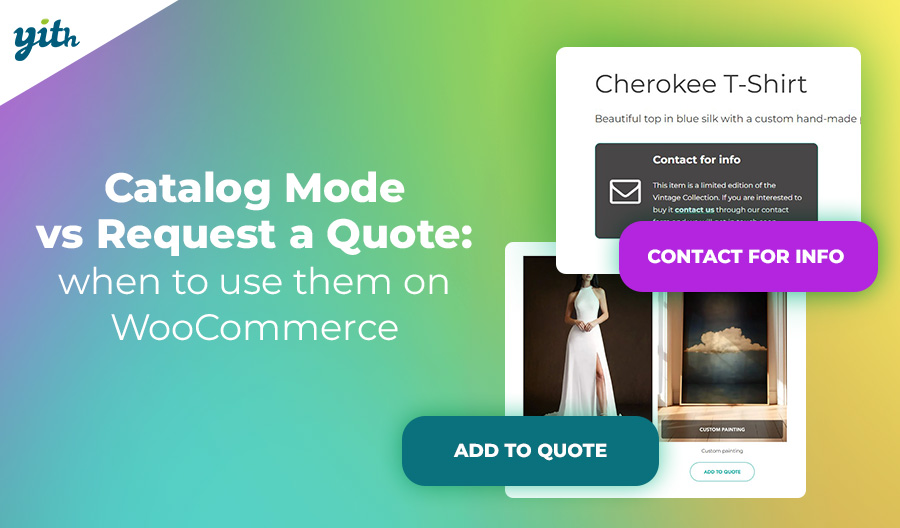If you have an online store, you’ll definitely want to reach more and more people, maybe even investing in advertising tools on search engines and social networks. All of this is important, but don’t lose sight of the fact that the traffic your site gets is just one piece of the puzzle. If you want your store to really thrive, you’ve got to optimize it in every way.
For those working in eCommerce optimization, it can sometimes feel like you’re fighting an uphill battle since it’s a constant effort. Today, we’re going to talk about a specific kind of optimization called CRO, or Conversion Rate Optimization. It’s key to turning occasional site visitors into regular, loyal customers.
In this article, we’ll go over what CRO is, why it’s important, and what strategies you can use to see big changes in your sales.
Table of contents

What is Conversion Rate Optimization (CRO)
CRO refers to the techniques and strategies used to improve conversion rates on your website. Conversion is when a user goes from visiting your site to becoming a customer. Along with the number of visits and how many customers you keep, conversion is one of the key factors in determining the value of sales on your eCommerce website.
To put it simply, if your store gets 100 visitors a month, and 10% of them buy something, that means only 10 of them will become customers. Sure, you can increase the number of visits with promotional campaigns, getting to 200, so that the customers become 20; but if on top of that you manage to achieve a 20% conversion rate, you will instead get 40 and so on (and loyal, existing customers are worth at least double that!).
It all sounds great, but how do you actually optimize your site’s conversion rate? How important is it to dedicate yourself to CRO? Which part of your conversion funnel do you want to optimize?
No worries, let’s take a look together!

Why is the CRO Important?
One of the greatest benefits of CRO is increased store revenue since the conversion rate affects eCommerce yield. However, thanks to the many steps involved in this type of optimization, other benefits can be achieved.
- ROI improvement – ROI, or Return on Investment, is a key metric of promotional and advertising campaigns that indicates how much return was earned for each invested dollar. If you’re getting a better return on investment from a site that’s really good at converting visitors from these campaigns, you’ll get the most out of your investment.
- More income and less output – Most tricks for improving the conversion optimization process don’t require much money, so you can increase your net gain by taking small steps.
- UX improvement – Since most of the changes you’re going to make are based on the user behavior model, by the time you’re done, you’ll have built a site that’s tailored to your clientele. This will improve their user experience (UX), retention, and satisfaction.
- Competitive website – Since the optimization process is ongoing, your store can adapt quickly to a constantly changing market. This gives you a big advantage over your competition and makes future optimization easier.
And a lot more. So, let’s take a look at some strategies for improving CRO.

Strategies for Improving CRO
When it comes to strategies for improving CRO, we can basically group them into three major categories: knowing your customers, knowing your products, and connecting them. We’ll go over them in more detail below.
User Behavior Analysis
It’s always important to know your target audience, especially eCommerce websites. Data like age, social media use, product searches, and trends are all factors that go into what you’ll sell on your online store and how you’ll sell it.
And when it comes to increase conversions, it’s key to see how users interact with your portal, especially where they’re having the most fun and where they’re getting stuck because of something blocking their way.
That’s why we suggest using two tools: heatmaps and surveys.
Both of these tools are all about understanding user behavior and preferences. The only thing that changes is the mode.
Heatmaps are visual tools that show you which areas of the site get clicked on and interacted with the most. It is an indirect analysis that looks at how people naturally use the site. There are many tools like this. Crazy Egg is a popular solution for those approaching user experience analysis, while Hotjar allows multidimensional analysis of user behavior.
You can also ask your customers for their opinion directly. By offering surveys and offering rewards for participation, you can get important feedback on what’s working and what isn’t on your site. Then, you can take corrective action.
Keep in mind that people’s attention spans are getting shorter, and if your website isn’t easy to navigate, you could end up losing a lot of sales.
A/B Testing
Another key strategy for CRO is definitely A/B testing (also known as split testing). It’s basically just a way to compare two versions of the same page of a site (or a part of it) to see which one gets better results.
So, it’s not just about comparing two sales or product pages, but also their internal elements like product images, buy buttons, descriptions, tags, categories, and so on.
This process takes a long time because you have to gather a lot of information. But it’s the best way to get data to help you improve your website’s conversion rate optimization.
To do this, start by setting goals. Do you want more people to click on your links? Purchases? How long do they spend on the site? Conversion? Once you’ve done that, change one thing, even if you’re tempted to make a lot of changes to get faster results.
Keep in mind that if you make a lot of changes, it’ll be hard to figure out how well each one worked, which will make your work more complicated and the results less reliable.
There are tools out there that focus on this strategy, like Google Optimize and Optimizely.
Landing Pages Optimization
One of the big differences between a classic site (like a blog) and an eCommerce site is the presence of landing pages and the way website visitors are directed. In a store, there are lots of pages designed to get customers to buy products or sign up for newsletters.
The whole site needs to be optimized, but especially the landing pages. Be sure to pay close attention to the following:
- Consistency – If users arrive on a given landing page via an internal or external link, make sure that page delivers the promises made when they were redirected. Don’t promote special offers that aren’t actually on the site or amazing products that aren’t being sold on the portal. These strategies might bring more people to your site, but they’ll actually hurt your average conversion rate and make people mistrust your portal.
- Titles and images – These are the first things your customers will see when they get to the page. Use quality images (but not so many that they slow down the loading speed) and titles that are clear, persuasive, and grab the visitor’s attention.
- Social proof – Make sure you’re using social proof tools like reviews, testimonials, and badges to quickly win over users, especially those visiting your store for the first time.
And that’s not all. Keep in mind that your web page needs to pick up and keep the visitor’s attention in the first few seconds they’re on it.
Form and Call-to-Action (CTA)
When you enter forms on your site, whatever the reason (quotes, contact, checkout, etc.), try to keep the number of fields to a minimum. People don’t like to waste time or feel like their data is being requested unnecessarily.
You can also use the auto-fill features and prompts to speed up the writing and make the process faster and more dynamic. Also, give immediate and clear feedback on why a field was rejected. You can do this by adding tags like “Unrecognized ZIP Code” or “Invalid Phone Number” so the customer can fix their typos right away.
Call to action (CTA) buttons are also important; make sure they’re clear, use the right colors, and communicate the desired action the user is requesting and the reward, such as “Click to Download.”
Run some A/B tests to find the best color and placement on the web pages, and create a sense of urgency with a deadline.

How to Increase CRO on WooCommerce
A WooCommerce store can be optimized as much as any other eCommerce store. In fact, it can probably be optimized even better thanks to the many features included in the platform and those that can be introduced via plugins.
Here are some points to keep in mind during your optimization journey.
Checkout Process Optimization
The checkout is clearly a critical step for the success of your store, but it is often overlooked by sellers. The time spent optimizing sales pages and choosing the best advertising campaign, is useless when sales are lost at checkout.
What should you pay attention to in this area? Here are three steps to ensure a functional, optimized checkout process:
- Minimize the process – The time between someone adding something to their cart and finishing their payment is really important. There are a lot of abandoned carts every year. To reduce the risk of abandonment, only ask for the information that’s absolutely necessary. You can also use tools like WooCommerce Quick Checkout for Digital Goods to make the process even faster.
- Offer well-known methods – Make sure you offer different payment options, picking the ones that are used the most in your country and by your target audience. A 20-year-old might use different payment methods than a 50-year-old, and an Italian might prefer different solutions than an Englishman. Offer well-known options that make customers feel secure, like PayPal.
- Sell by phone – Make sure the whole site, especially the checkout, works well on mobile devices, as more and more users are moving to this type of browsing, and you could be missing out on a lot of sales.
Try out different checkout options and see which one works better.
Customizing the User Experience
Another aspect that people often underestimate is the quest for a personalized experience. It’s estimated that over 70% of users get frustrated by a de-personalized shopping experience. In a world where people are often seen as just money, users are moving towards experiences that make them feel important and heard.
You can stand out from the crowd with a few simple tricks:
- Suggest products based on customer needs – Product recommendations, or “Frequently Bought Together,” are a great way to boost your sales because they let you cross-sell and also help your customers. They’ll see that their needs and wishes are part of the store and the offered guidance will result in future purchases.
- Discounts and promotions – There’s no better way to win over a customer than a personalized discount, maybe on their birthday, right? And the WooCommerce Coupon Email System plugin makes that happen (or to thank them for a review, or for responding to a survey). Show them some love and give a small discount to seal the deal!
It also makes it easy for people to give feedback by providing a simple way to get in touch, like a chat or a contact form.
Site Speed Optimization
Website visitors aren’t willing to wait minutes for a web page to load anymore. Those days are over, they want data to appear from top to bottom. In today’s fast-paced world, immediacy isn’t just wanted, it’s expected.
An estimated of 32% of people leave a page within the first 3 seconds of loading, and that number jumps to 90% if the page takes more than 5 seconds to load. So make sure your web page is fast and responsive:
- Choose a quality hosting service – We get that some services are tough to beat, and the monthly hosting cost is eating into your profit margin. But that shouldn’t make you choose a service that’s not up to snuff. Using distant servers, high latency, and an inability to support proper scalability could be the fastest path to failure for your business.
- Use cache plugins – Usually, the more plugins you have, the slower your site will be. But there are times when having more plugins can actually speed things up. There are some plugins that can help you speed up your site, like WP Rocket.
- Don’t weigh down the pages – High-quality images and videos can really impress potential customers, but not if your website is slow. Make sure to use images in a format that works well online, striking a balance between quality and file size.
Reviews and Testimonials
As we mentioned, social proof is a great way to show customers you’re trustworthy and that you value them.
Make the customer reviews stand out on the site, especially on the main pages. Get them to leave reviews by offering them coupons.
This way, you can get a lot of reviews and also get customers to come back and make a second purchase using their discount code. You can do all this with a tool like WooCommerce Advanced Reviews.
Using badges that show off the product’s main features can also have a positive impact.
Using Specific CRO Tools for WooCommerce
One of WooCommerce’s best features is the wide variety of plugins available to enhance its functionality and introduce new ones. In this article, we’ve looked at a few of them, but to create a site that works perfectly, we strongly recommend that you use plugins that come from the developers themselves, so they don’t cause problems interacting with each other.
YITH really shines in this area. Not only are all of its plugins developed and constantly updated, but they also come with the best possible support. Plus, when you use them together, you get extra functionality, creating a vibrant and efficient ecosystem.
Try out all the features in the free live demos!
Conclusion
A good number of marketers think that their job is done as soon as they’ve set up their online store, but that’s not really the case. The optimization process is always happening, so you’ve got to keep an eye on it. But it can make a big difference in revenue and conversion.
Just follow the tips we’ve shared here and use the conversion rate optimization tools in the YITH catalog that are a good fit for your site.



